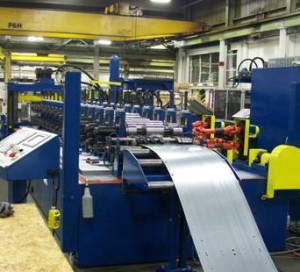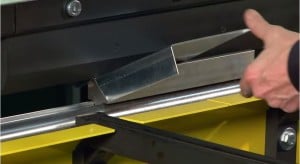A press brake is a staple for workshops producing HVAC duct, but certain applications may call for a different forming method.
Sheet metal isn’t picky. It will bend one way or the other, once force is applied. Achieving a target shape, however, requires some finesse… and based on your production goals, a particular machine may serve you better.
First, it’s important to note that bending a variety of shapes can be performed using either a press brake or roll former. Factors like shape variation and part length may affect the ease or speed of production on one machine versus the other, but know that it is possible to make your desired shape on either machine.
When to Use a Roll Former
You will use your roll former over a press brake when you’re looking to fabricate longer, identical parts en masse. As long as the material used can withstand the bending, it can be roll formed to the desired radius. A variety of parts can be produced through roll forming, from piping using heavier gauge materials to computer components using .005” thick tin plate.
The key to getting the most out of your roll forming production is to use it on projects that require fabrication of identical parts. If you require a variety of parts, even within the same family, you’re likely to find a more efficient process relying on a press brake.
When to Use a Press Brake
With its versatile capabilities, your press brake can take on those forming operations that require part profiles that are smaller and aren’t exactly identical. Although press brakes are typically used to form parts for HVAC or building exteriors, they can be used a bit more creatively for specialty applications if equipped with the right tooling.
The press brake has more diverse bend capabilities, but does not meet the mass production time you’ll find with a roll former. You’ll also have more difficulty making longer parts with a press brake, due to the natural limitations of the machine’s bed.
Which Machine Fits Your Operation?
As with most decisions, it comes down to productivity and profitability. If your shop requires a high output identical parts, the roll former will yield higher volume in a shorter amount of time. If your shop is performing a variety of bends within a family of similar profiles, a press brake will likely be all you need to get the job done. Of course, you could always equip your shop with both machines to cover all your bases.
Need help finding the best production solution for your operation? Comment below and tell us about your challenge.



